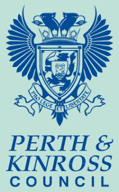Planned preventative maintenance (PPM)
Planned preventive maintenance is a proactive way to maintain equipment and property assets. Instead of waiting for things to go wrong, PPM focuses on regular servicing, inspections and minor fixes to stop problems before they start. It's an essential part of risk management, cost control and compliance.
Unlike reactive maintenance, which deals with faults after they happen, PPM aims to keep systems reliable, safe and efficient. It reduces downtime, extends asset life and supports legal compliance.
Why it matters
-
Improves reliability – Keeps equipment running as it should
-
Saves money – Prevents major faults and emergency call-outs
-
Supports compliance – Helps meet health, safety and building regulations
-
Boosts productivity – Well-maintained assets perform better
-
Reduces risk – Identifies potential issues before they escalate
What good PPM looks like
An effective PPM strategy includes:
-
A clear schedule for checks, servicing and replacements
-
Accurate asset records and maintenance logs
-
Use of CAFM or CMMS software to manage tasks and track performance
-
Focus on high-risk or business-critical assets
-
Regular training for maintenance teams
-
Strong document control for audits and reporting
How technology helps
Modern CAFM systems like Concerto make it easier to manage PPM. They automate scheduling, track compliance, and provide real-time updates from mobile devices. With everything in one place. From floor plans to fire safety logs, estate teams can plan ahead, respond faster and make better decisions.
Concerto's CAFM module also supports order tracking, mobile job updates and automated work orders. This ensures tasks are completed on time, costs are monitored and nothing falls through the cracks.
PPM is not just about maintenance. It's about protecting people, assets and budgets.



